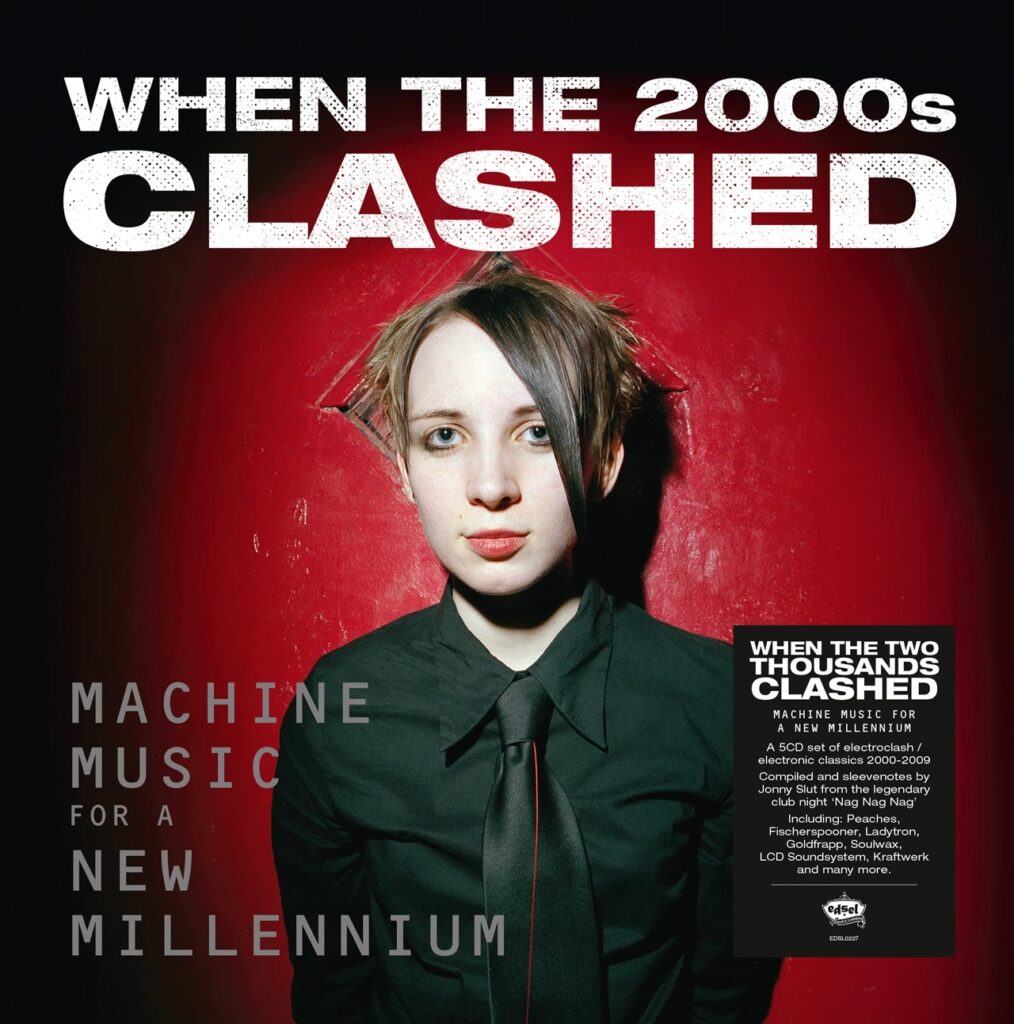In the rich and varied history of Japanese art, I’d wager the work of Hokusai would be most recognisable to the average person on the Clapham Omnibus – or, indeed, the post-club Uber. Most people would know The Great Wave Off Kanagawa, even if they were unaware of anything else by the artist. That swirl of energy, a force of nature frozen in time; looming, but never quite breaking, has been endlessly reproduced on IKEA prints, Carhartt T-shirts and infinite iterations of Etsy tat.
A little linguistic detour: the word “refund” comes from the Latin refundere – to pour back. As clubland legend has it, the second night of Nag Nag Nag at Ghetto in London’s Falconberg Court was so sparsely attended that Jonny Slut refunded everyone’s entry fee at the end of the night. The cashback phase didn’t last: within months, queues stretched around the block, and celebrities as diverse as Björk, the Pet Shop Boys and Kate Moss were joined by half the cool kids in London. Even Cilla Black – with Dale Winton as wingman – made it down one night.
When The 2000s Clashed, a new five-CD box set compiled by Jonny Slut for Demon Music’s Edsel imprint, documents this era and the long-lasting currents surrounding it. At Nag Nag Nag, Mr Slut, along with Fil OK and JoJo de Freq, conjured something equal parts art happening, electronic sweatbox, and fashion week afterparty. The name came from a Cabaret Voltaire song (which was never to my knowledge ever played) and the sound drew together disparate electronic music weirdos and outliers from London, Munich, Berlin, New York and elsewhere in what DJ Hell christened electroclash. Larry Tee took this name for his 2001 festival, helping to propel this wave of flotsam and jetsam into something coherent. The club remained resolutely on its own terms however – Jonny and co famously never increased the door charge for the entirety of its run. A favourite Nag Nag Nag moment was Slut heralding midnight on New Year’s with ‘Revolution Action’ by Atari Teenage Riot.
I first went to Nag the week after that infamous class-action refund – and then every week for the next few years. Reader: I even DJed there occasionally. To see it grow from a half-empty curiosity to a road-blocked phenomenon was to be a participant in a cultural moment in real time. Now that the warm red leatherette sofas of the Ghetto are gone to make way for the Elizabeth Line at Tottenham Court Road, what is the club’s legacy? Charli XCX’s Brat – perhaps one of the biggest pop moments of recent years – was heralded as electroclash-inspired, and the genre has been invoked (generally favourably) for artists as diverse as Crystal Castles, Shygirl, Powell and Lady Gaga. Yet this wasn’t always the case. The view from some critics at the time was often that electroclash was vapid, posey and – frankly – too queer. Places like Nag Nag Nag were possibly a bit too LGBT+tastic for the mainstream music and dance press not cock a regular snook.
Spread across five discs – Fundamentals, Essentials, Developments, Evolutions and Origins – the compilation features a wealth of gems from this curious floating world, and the continuing power of that wave. There are the genuinely big crossover hits: ‘Perfect ‘Exceeder)’ by Mason and Princess Superstar, ‘Day And Night’ by Kid Cudi, ‘Let’s Make Love’ by CSS. There are the electroclash mainstays: Peaches, ADULT., Fischerspooner. There are artists such as Jimi Tenor and Add (N) To X not usually included underneath the fabulous electroclash umbrella, and indeed one of the joys of this compilation is how it combines the unknown with the familiar. ‘We Are Your Friends’ by Justice and Simian – a song which, with the best will in the world, I never need to be alone with again – sounds positively fresh and coherent thanks to the clever sequencing.
Among the lesser-known gems:’ Fishnets’ by The Silures, the one-EP hookup between Vitalic and Linda Lamb, still sounds like an industrial port’s foghorn serenaded by a siren on the rocks. ‘The Game Is Not Over’ by T. Raumschmiere featuring Miss Kittin still bangs, splutters and schaffels like nothing else, while Battant’s ‘Jump Up’ is a brilliant pop song in any era, compounding confusion why they weren’t bigger even at the time. ‘Sandwiches’ by the Detroit Grand Pubahs is essentially Hot Butter’s ‘Popcorn’ gone filthy – saucy and entirely silly fun. And why not?
One of the many joyous aspects of this release is the material that’s unfamiliar even to someone who experienced electroclash the first time around. ‘Zauberstab’ by ZaZa, an entirely new name to me, seems to have the same beat as Zombie Nation’s ‘Kernkraft 400’ (also included here), yet predates it by two decades. There are even a few “oh, THAT’S that song!” moments – most notably ‘Disco Rout’ by Legowelt. By the third and fourth CDs, the DNA has mutated further, incorporating styles such as rap – Yo Majesty’s ‘Club Action’ being a particular highlight. Scattered throughout are established practitioners surfing the wave – The Chemical Brothers remixing Kylie, Dave Clarke collaborating with Chicks On Speed, Yeah Yeah Yeahs going electric with tracks such as ‘Zero’. Another joy of this compilation is that it hasn’t followed strict scene-based lines. It reaches wide, digs deep, and doesn’t get bogged down in dull tribalism. Seeing Moby here might be unexpected, but including Trentemøller’s remix of the classic ‘Go’ exemplifies the open-minded approach on sound, not scene.
This collection charts a chronology of electronic sounds that have gone from initial wave to flooding modern music, and perhaps none of the trajectories of the first four CDs is more exemplary of the potential limits of that wave than Hot Chip. From an early gig supporting No Bra, they overcame that initial setback to become, quite simply, a massive pop band – soundtracking adverts, TV sports montages and one thousand retail experiences. Every now and then, the wave becomes the mountain. Listen closely to modern pop and you’ll hear the ripple of this wave still moving.
In Hokusai’s painting, the great wave curls over a fragile boat, Mount Fuji stoic in the distance. And yet, despite the threat, there’s a certain joy in the work: imagining getting engulfed by that wave and carried along. Listening to this compilation repeatedly, there’s a single word that I keep coming back to: joy. And for all the focus on fashion and performance, what remains is the music: a disparate soundworld of searing synths, grinding machine noises, occasional guitars and vocals – shouted, distorted, muttered, and even, shock horror, sung. Utterly joyous.
In maritime law, establishing which country has jurisdiction is notoriously difficult – lines on land become hazy in the sea, even with the modern miracle of GPS. Genre borders are equally unstable: where does electroclash end and bloghouse begin? This wonderful compilation traces the various ripples that coalesced and became a glorious wave that remains kinetic to this day. Whatever it is, come and jump in. The water is joyous. No refunds required.



